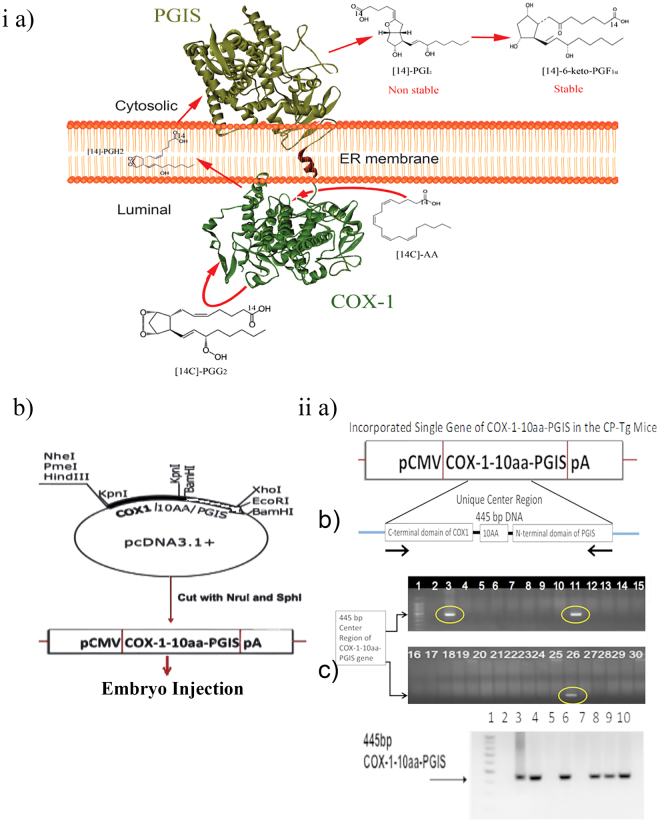Figure 1.
Mouse model generation and identification. (ia) Schematic presentation of the engineered SCHEC, COX-1-10aa-PGIS, with high efficiency in directly converting cellular AA to PGI2 on ER membrane by three continuous catalytic reactions within a single polypeptide chain. (ib) Construction of COX-1-10aa-PGIS cDNA. The sequence of COX-1 linked to PGIS through a 10-aa linker (COX-1-10aa-PGIS) was generated by PCR and subcloning procedures by the vector company (Invitrogen). The resulting cDNA was successfully subcloned into the pcDNA 3.1 vectors at Kpnl and BamHl sites containing a cytomegalovirus early promoter by PCR. The cDNA fragment (3.2 kb) containing COX-1-10aa-PGIS, a pCMV promoter and a PGH polyadenylation site (pA) was cut at the Nrul and Sphl sites from the COX-1-10aa-PGIS-pcDNA3.1 vector and purified to a single band as a transgenic gene for preparation of the transgenic mice. (iia) PCR primers designed to examine integration of the gene, a unique DNA fragment of 445 bp, into the genome. (iib) Genotyping of the first founders of the transgenic mice by PCR. The incorporated DNA of COX-1-10aa-PGIS in the mice was determined by PCR using the primers described in (iia), mouse tail tissues as template, and analysis by agarose gel electrophoresis to identify the specific 445-bp hybrid enzyme. (iic) PCR analysis of the second group of transgenic mice using the tail cut PCR approach in an identical manner to the procedures described in the (iib) panel.

